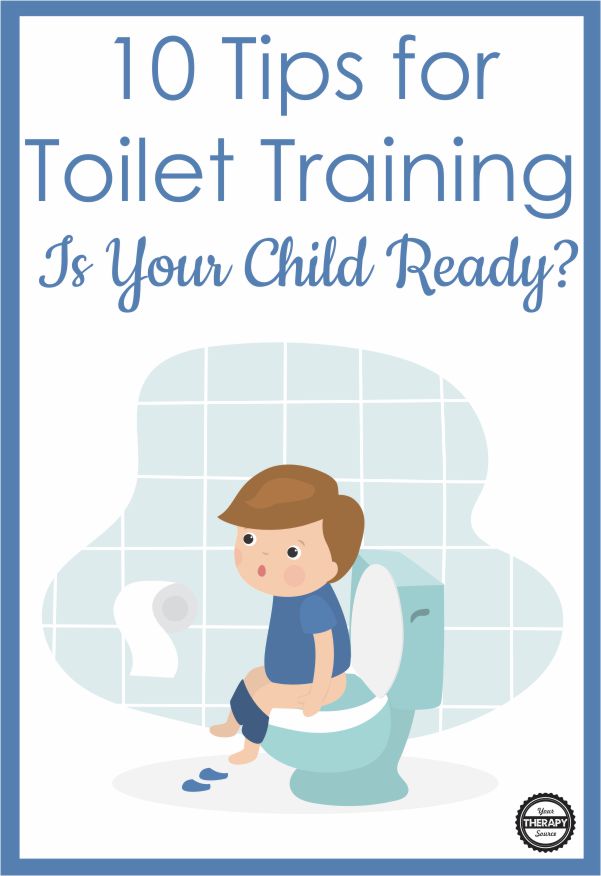10 Tips to Help Children with Toilet Training
Whether it be toilet training a young child or helping a school-aged child with a bathroom routine, there can be many obstacles to overcome to reach full independence in the bathroom. There are many factors to toileting such as body functions, age, physical environment, motor skills, communication skills and routines.
How Do You Know If Your Child Is Even Ready for Toilet Training?
There are many signs or skills that help caregivers make the decision to start toilet training. Previous research indicates that older age is a predictor of successful toilet training. In addition, past results demonstrated that if a child expresses the need to evacuate and can pull clothes up and down, this increases the probability of becoming dry.
Recent research observed toilet training related development signs in healthy toddlers to investigate if there were proper times to start toilet training or any signs that would predict success. The results of the research from 269 healthy toddlers pre, during and post toilet training indicated the following:
- Sitting stable, picking up small objects, and spontaneously putting objects in containers were present in all 269 children and had no predictive value on toilet training.
- All other developmental signs were significantly more present in those who had started toilet training.
- Age had a significant association with 13 out of 15 developmental signs. There was no association between age and understanding and following instructions or putting objects in containers.
- Understanding and following instructions and interest in toilet training were significantly more present when toilet training had been started.
- Having a broader vocabulary and using potty related words were significantly more present during toilet training.
- Dry during midday nap had no significance on toilet training.
The researchers concluded that four developmental signs were significantly associated with the completion of toilet training: “saying no,” “having a broader vocabulary,” “completing tasks and being proud of new skills” and “putting things where they belong” (Wyndaele et al, 2020).
10 Tips to Help Children with Toilet Training
Here are 10 general tips to help children with toileting.
- Use a visual schedule with pictures to indicate the steps involved in using the bathroom.
- Follow the same routines each time the child goes to the bathroom whether at home, school or in the community.
- Encourage the child to wear clothing that is easy to manipulate.
- Modify the physical environment if needed. For example, does the child have the postural control to remain seated or does the child need external support? Does the child prefer his/her feet to be on the ground?
- Play calming music in the bathroom to relax the child.
- Use timers if needed to encourage the child to sit for a certain amount of time.
- Be mindful of sensory preferences regarding noise levels. The noise of flushing a toilet can be very scary for some children. Public bathrooms are very loud. If able, look for a quiet bathroom with only one person at a time. Use earplugs if necessary.
- Be mindful of sensory preferences regarding tactile preferences. Does the child prefer softer toilet paper or warm wipes?
- Use a reward chart to earn a prize for independent toileting.
- Make sure you and your child are ready and motivated. Sometimes this can be hard to determine, but it can be very difficult to work on toileting if the child is not biologically ready and motivated. For children with special needs, independence with toileting can be a difficult task. Parents and teachers need to be patient as children progress with their skills.
Reference: Wyndaele, J. J., Kaerts, N., Wyndaele, M., & Vermandel, A. (2020). Development Signs in Healthy Toddlers in Different Stages of Toilet Training: Can They Help Define Readiness and Probability of Success?. Global Pediatric Health, 7, 2333794X20951086.
If you need more information to help children with toileting check out these resources:
The Practical Guide to Toilet Training Your Child With Low Muscle Tone (digital document) written by CathyAnn Collyer, OTR, LMT, provides a complete explanation of the motor, sensory, and social/emotional effects that low muscle tone has on toilet training. It helps parents and therapists to understand whether a child is ready to train, and how to start creating readiness immediately. You will learn how to pick the right potty seat, the right clothes, and how to decide between the “boot camp” or gradual method of training. A child’s speech delays, defiance or disinterest in potty training are addressed in ways that support families instead of criticizing them. FIND OUT MORE.
Bathroom Social Stories This digital document created by Thia Triggs, OTR, provides 7 book covers, 76 separate book pages with a corresponding visual to aid understanding, and eight visual sequence strips for posting. Pick only the pages for your student’s needs. Specific sensory aversions that make it difficult for children with autism or anxiety issues to use new bathrooms are included. Clear, consistent visual expectations, as well as specific accommodations, help make bathroom use successful! Editable text is available on one cover and four pages so that you can add your student’s name and specific circumstances that are important in your situation. Available for boys OR girls. FIND OUT MORE.







